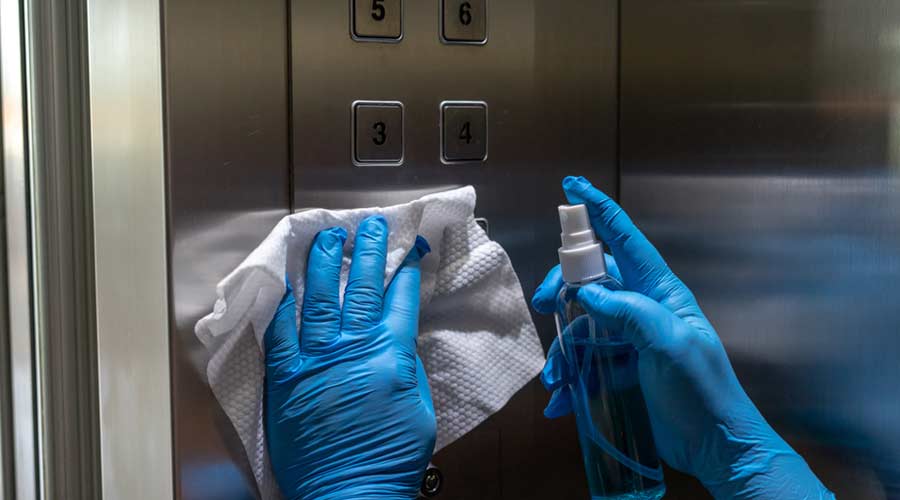
By Dale Franke, Vice President of Sales and Marketing, Acme Paper & Supply Co, Inc.
As building occupancy continues to rebound, the definition of “clean” is changing. Pre-pandemic, if a building looked clean, then it was — no questions asked (usually). Today, however, building operators must clean for health, which is a driving force behind many recent operational efficiencies, including accountability, labor efficiency, safety and disinfection protocols, and performance. Facilities across multiple verticals, from healthcare and education to commercial, property management, and building service contractors, are adopting smarter tools and systems.
Here are seven operational efficiencies all building owners and managers should be adopting:
1. Data-Driven Cleaning
Internet of Things (IoT) technology is the number one trend driving all other operational efficiencies in buildings across the nation, transforming how restrooms and other high-traffic areas are maintained. IoT-enabled restroom systems, for example, allow towel, toilet tissue, and hand soap dispensers to talk to centralized dashboards while measuring traffic and usage to optimize labor and ensure resources are replenished when needed, not just on a schedule.
2. Automated Cleaning
Autonomous floor scrubbers and vacuums are much more efficient than slinging wet mops or pushing handheld vacuum cleaners around a large building or complex. Autonomous cleaning equipment frees up valuable labor resources. In fact, data shows a 30 to 50 percent time savings on labor with autonomous scrubbers, especially in larger facilities, demonstrating the return on investment.
3. QR Codes and Mobile Verification Tools
To further demonstrate “proof of clean,” QR codes and mobile tools provide real-time accountability and data. Using these tools, cleaning teams scan in when they start and scan out when they finish, tracking labor and providing proof that areas were cleaned according to protocol. Some public restrooms even allow users to rate the cleanliness of the facility using QR codes at exit points, alerting cleaning teams immediately when issues arise.
4. AI-Powered Workforce Management Systems
With labor continuing to be a challenge, AI-powered workforce management systems can also help optimize labor deployment based on real-time data, helping organizations meet service agreements while reducing waste and improving accountability.
5. Lean Cleaning Protocols
The lean cleaning protocol is a structured approach to workplace organization and cleanliness rooted in the Five S methodology of lean management:
- Sort: Eliminate unnecessary items to free up space
- Set in order: Organizing necessary items
- Shine: Maintaining a clean work environment
- Standardize: Establishing consistent cleaning routines
- Sustain: Building habits to maintain established standards
We’re seeing this results-driven approach to cleaning gaining traction in larger, high-traffic facilities like airports and hospitals.
6. Chemical Dilution Solutions
Gone are the days of “more is better.” Improper chemical usage not only wastes products but also compromises safety and effectiveness. Over or under-diluting chemicals can void the EPA registration. Modern chemical dilution dispensers take the guesswork out of measuring chemical solutions, ensuring the proper amount every time for a safe environment for building occupants as well as the end users. These dispensers also support cold-water dilution, reducing hot water energy costs, while color-coded icons make chemical identification easier. With cleaning for health top of mind, overuse of a product can lead to dangerous indoor air quality and underuse to poor disinfection practices.
7. Centralized Dashboards
From restroom usage to machine runtimes, cleaning data can be tracked in one centralized dashboard that delivers a comprehensive view of performance and cleanliness. With building occupancy back to pre-pandemic levels in many regions, proof of cleanliness is essential, and dashboards deliver the data.
These operational efficiencies are driving the cleaning trends within facilities around the U.S. and the world. Facilities that invest in these efficiencies now will be better positioned to meet the demands of the future.
Dale Franke is the Vice President of Sales and Marketing at Acme Paper and Supply Company,?one of the nation's largest suppliers of sanitation solutions, disposable food service packaging, restaurant equipment and supply, retail and industrial packaging, and custom-designed packaging. Franke has nearly 30 years of experience in the facility supply industry and more than 10 years of experience in sales leadership. He can be reached directly at?dfranke@acmepaper.com. For more information visit?https://store.acmepaper.com/.??
posted on 7/18/2025

 The Down and Dirty on Cleaning in Virus Season
The Down and Dirty on Cleaning in Virus Season How Surfactant Use is Expanding in Commercial Cleaning
How Surfactant Use is Expanding in Commercial Cleaning